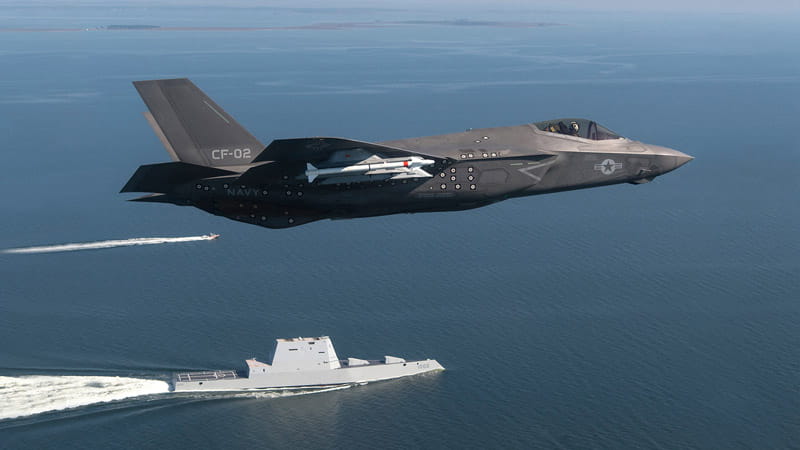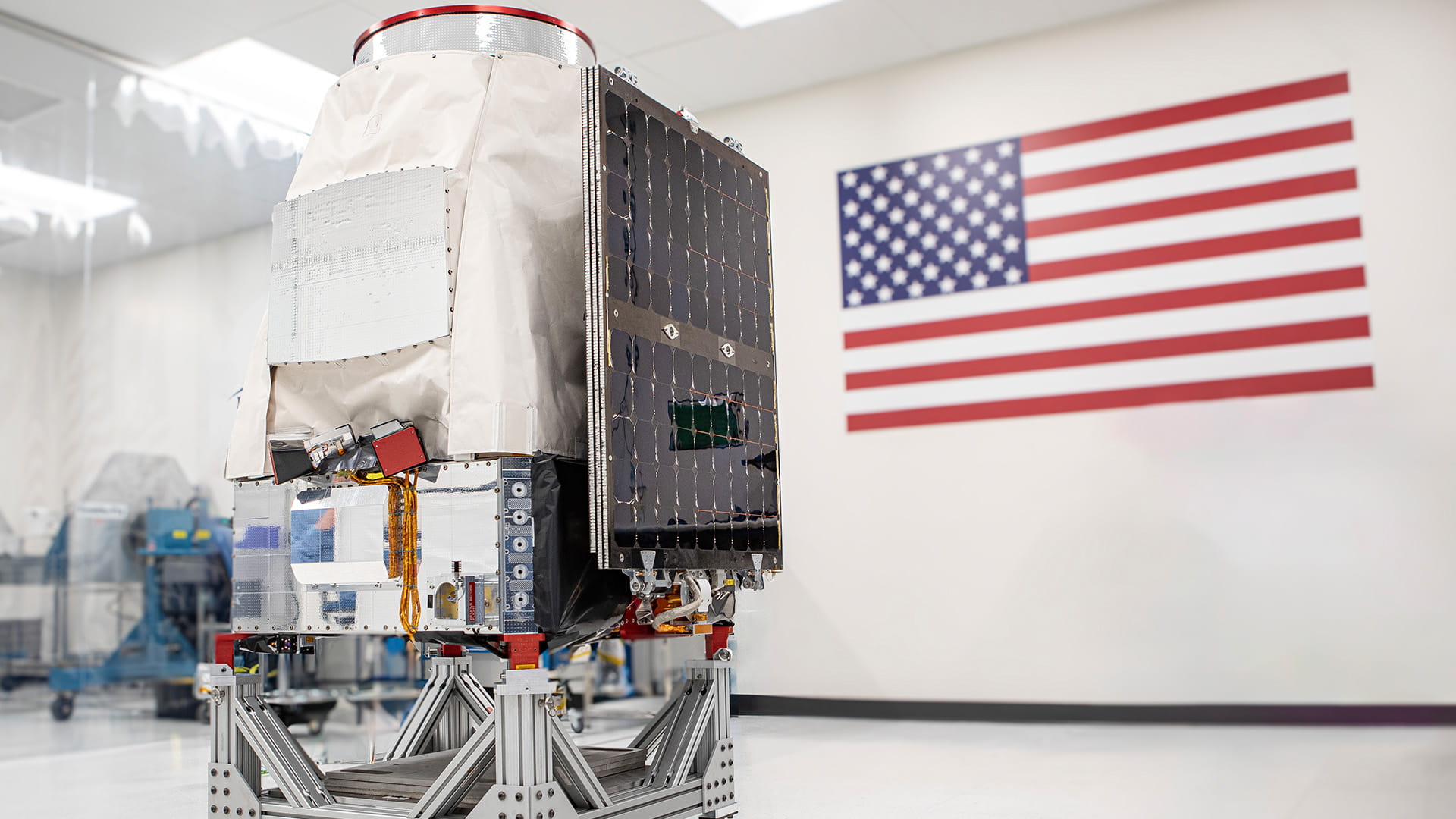Making the ‘connected battlespace’ a reality
Testing and fielding the tech for faster, better battlefield decisions
For more than 50 years, the KC-135 Stratotanker had one role: a flying gas station for military aircraft. But a recent demonstration showed it can do more in the U.S. military’s future approach to combat.
Equipped with a system known as the Intelligent Gateway from Collins Aerospace, an RTX business, the tanker bridged disparate networks – some within the line of sight, some beyond – at Northern Edge 2023, a military exercise led by the U.S Indo-Pacific Command in Alaska and the Western Pacific.
In that exercise, a modified KC-135 supplied by the Utah Air National Guard flew alongside the Multi-Program Testbed – a modified Boeing 727 outfitted with powerful sensors by Raytheon, also an RTX business – and seamlessly transferred targeting data on simulated threats at the tactical edge, a term for the front lines of battle. The Intelligent Gateway then used autonomous routing to filter data and send it securely to U.S. and allied decision-makers across multiple classification levels.
“We only have so many surveillance aircraft available, and in a theater as large as the Indo-Pacific, there’s going to be a lot of holes with no command and control,” said U.S. Air Force Maj. Mike Starley, Air National Guard Air Force Reserve Command Test Center KC-135 test detachment director, in a Pacific Air Forces article. “But we’re always going to have a tanker there, no matter what. Now we’re able to take advantage of all that space and use the KC-135 that’s already in the fight anyway for command and control.”
This is just one of many examples of RTX’s work to help the U.S. Department of Defense sense and make sense of data so decision-makers can act faster than ever. Here are a few others.
Sense
The Multi-Program Testbed flew at Northern Edge for two purposes: to test sensors’ ability to collect intelligence data from multiple sources, also known as multi-INT; and to show how artificial intelligence and machine learning can synchronize and prioritize data to ease the burden on operators who have to analyze it.
The testbed carried advanced processing software called Nimbus Rush, along with AI-enabled machine-to-machine communications that prioritized multi-INT data and distributed it to multiple aircraft including the Stratotanker, in addition to C-17 and C-130 transport aircraft. The data gave those aircraft greater awareness of the simulated threats.
“We’re proving that our survivable data orchestration solutions, such as Nimbus Rush, can rapidly speed up the decision-making process to give the joint force and coalition partners a decision advantage,” said Conn Doherty, vice president and general manager of battle management command and control and autonomy solutions at Collins Aerospace.
As networking capabilities are becoming more powerful, so are the sensors that provide them with data. Typically, a sensor needs to capture a certain number of pixels to provide an identifiable picture. RTX’s newest sensor needs only one.
That sensor, known as RAIVEN, uses artificial intelligence to boost the power of the company’s existing electro-optical/infrared technology. It allows users to see up to five times farther and clearer, and to identify objects faster.
“What we’re doing with RAIVEN,” chief engineer Jake Ullrich said, “is adding a different element of intelligence behind each pixel.”
RAIVEN identifies objects by recognizing their spectral signature – a fingerprint-like measure of the way they reflect light – and comparing it to a database. Artificial intelligence enables it to process large amounts of data quickly, giving commanders more time to make decisions.
“That’s what makes RAIVEN so smart,” Ullrich said. “Now we can start to ID things very, very quickly – before we can even really see them in a traditional sense.”
The company plans to flight test the first version in 2024. It will be compatible with many platforms across the military domains, thanks to its use of open-systems architecture.
“We really wanted to do our part to bring as much capability to help with the joint problem between services and platforms,” Ullrich said. “I’m most excited about putting this new revolutionary capability into the warfighters’ hands, so that they’re much more prepared, and they’re safer.”
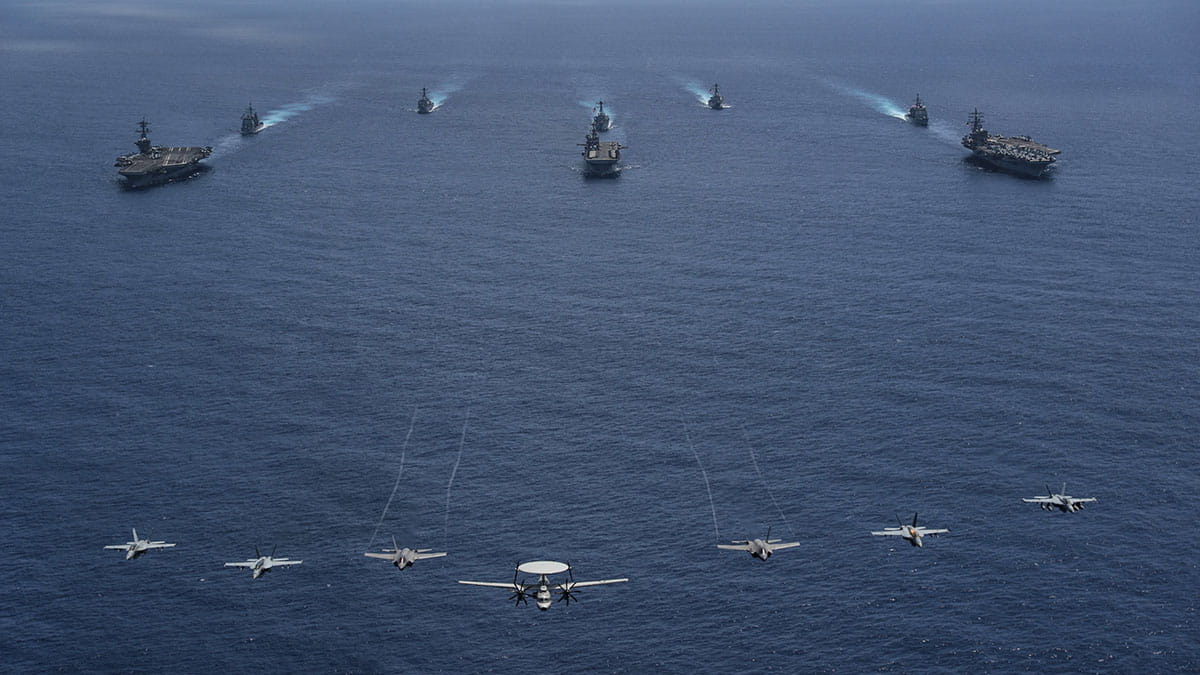
Aircraft from Carrier Air Wing 9 fly over several U.S. Navy ships in formation during Valiant Shield 2022, a training exercise where the U.S. armed services operated together across military domains. (U.S. Navy photo)
Make sense
With powerful and intelligent sensors, the military will need to be able to transmit and understand more data than ever. That requires coordination of datalinks between platforms that, in many cases, were not designed to communicate with one another.
To solve for that, the Intelligent Gateway system turns disconnected platforms into connectivity hotspots for data to pass through. At Northern Edge, for example, the Intelligent Gateway, combined with a battlespace command-and-control center capability, demonstrated how the KC-135 could serve as a command-and-control node to conduct battle management and dynamic targeting.
The challenges of connectivity persist across domains. At a U.S. Army demonstration on a mountaintop in the Utah desert, a team from Collins Aerospace proved their communications system could help the military connect the battlespace and use data to make better, faster decisions.
And in the 48 hours leading up to that test, they also proved they were masters of the workaround.
The helicopter equipped with their system had an engine failure en route to the site. The pilot landed safely, and the team scrambled to recover their technology as they looked for another aircraft.
Nothing panned out.
Finally, after researching topographical maps and a making series of calls to local police, park services and a few other authorities, they had a solution. Rather than fly their system to the specified altitude, they would truck it there instead.
They arrived at the mountaintop and set up their equipment on the ground, only to encounter one last problem: No signal.
The system needed a little lift. The team found it in the back of their Humvee.
“There was a mop bucket. This plastic, beautiful yellow thing,” said Chadwick Ford, an associate director and part of the Connected Battlespace & Emerging Capabilities team at Collins Aerospace.
They put a mounting bracket on top, popped the system into place, ran the demo, and showed FlexLink, their open-system radio technology, could connect air and ground platforms to transmit targeting data to a command center several hundred nautical miles away.
“We were able to not only meet the mission but exceed the parameters,” Ford said. “What they saw was our resiliency to figure it out and make it happen with duct tape – or in this case, a mop bucket.”
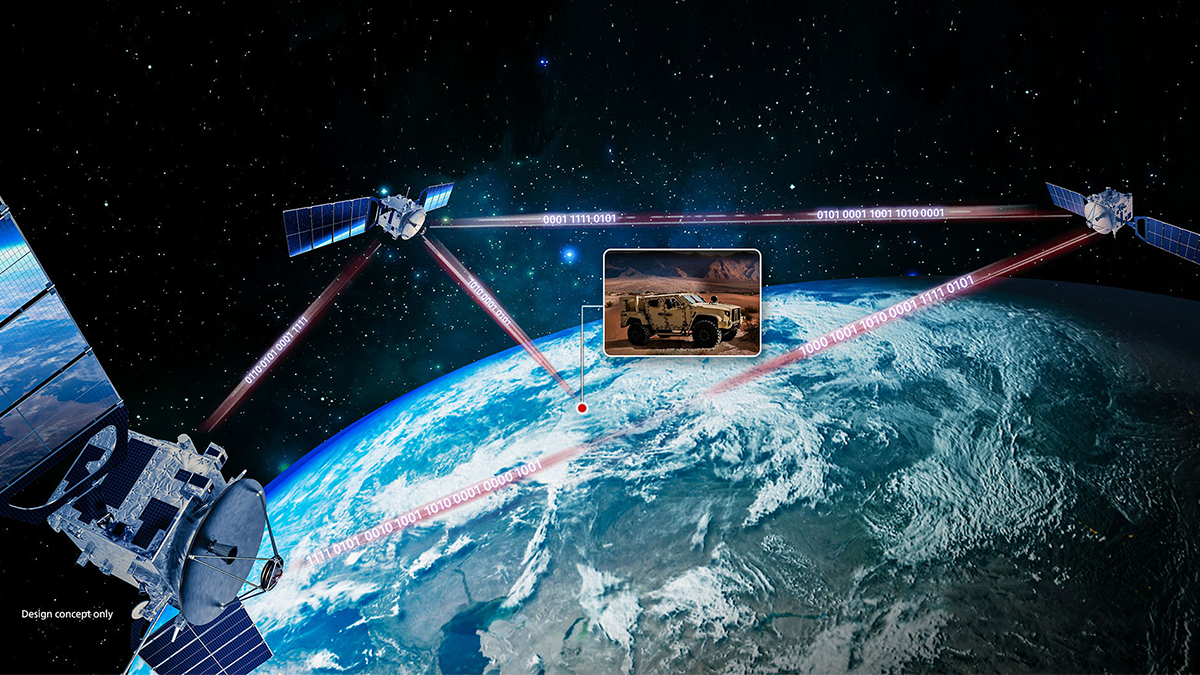
RTX is developing a prototype for the U.S. Army’s Tactical Intelligence Targeting Access Node, or TITAN, ground station, which will find and track potential threats by quickly combing through immense amounts of sensor data.
Act
The point of collecting, analyzing and sharing all this data is so militaries can decide quickly how to react. Often, that reaction includes the use of effectors, a term that includes missiles, mortars and non-kinetic weapons such as lasers and high-powered microwaves.
Effectors are the last link in a decision chain that starts with multi-INT sensing and networking. With the right mix of capabilities, military operators and commanders receive the right data at the right time, and decision cycles shrink from hours to minutes.
Additionally, effectors can double as data sources themselves, feeding sensor data back to command nodes.
Among RTX’s most advanced effectors is the StormBreaker smart weapon, an air-launched munition that can glide more than 45 miles and strike moving targets, even in severe weather that would scuttle most guidance systems. It is the first fully network-enabled weapon in the U.S. Air Force and U.S. Navy, meaning it can collect data and share it with other platforms while in flight.
“If you release the StormBreaker weapon, another pilot could take control, or you could pass it to a ground controller, and that’s all enabled through that weapon’s data link,” said Steve Milano, director of air systems. “Further, once the weapon is in flight, it can provide what’s called a ’weapon in flight target update’ back to the platform or the controller so that you can make decisions based off the information the weapon is receiving.”
The weapon’s advanced computing and network capabilities allow his team to take what they learn at test flights and use modeling to predict how the weapon would react in millions of scenarios, with variables including the aircraft carrying it, the environment where it’s operating, and the target it is seeking.
“We are continuously pushing the edge of the envelope for the weapon from its network-enabled capability, its sensing capability and its ability to acquire targets,” Milano said. “These are the things that are going to come together to be the next generation of air dominance.”
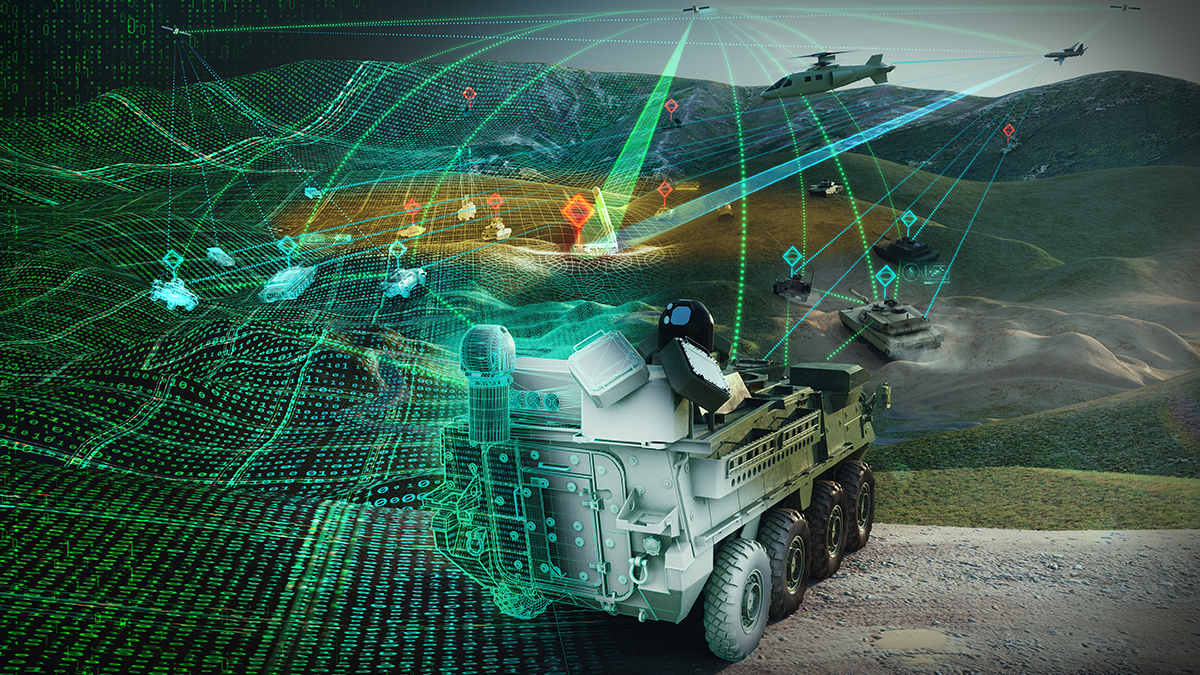
Effectors – a term that encompasses missiles, mortars and non-kinetic weapons – have two main roles in the connected battlespace: to defeat targets and to create data of their own.
Bringing it together
While RTX engineers are working on projects that span every domain and stage of conflict, they all have the same goal of helping the military envision what’s possible – and then bringing it to life.
“We keep growing and building,” Ford said, “and just to be part of making a vision into a reality is really, really cool.”
